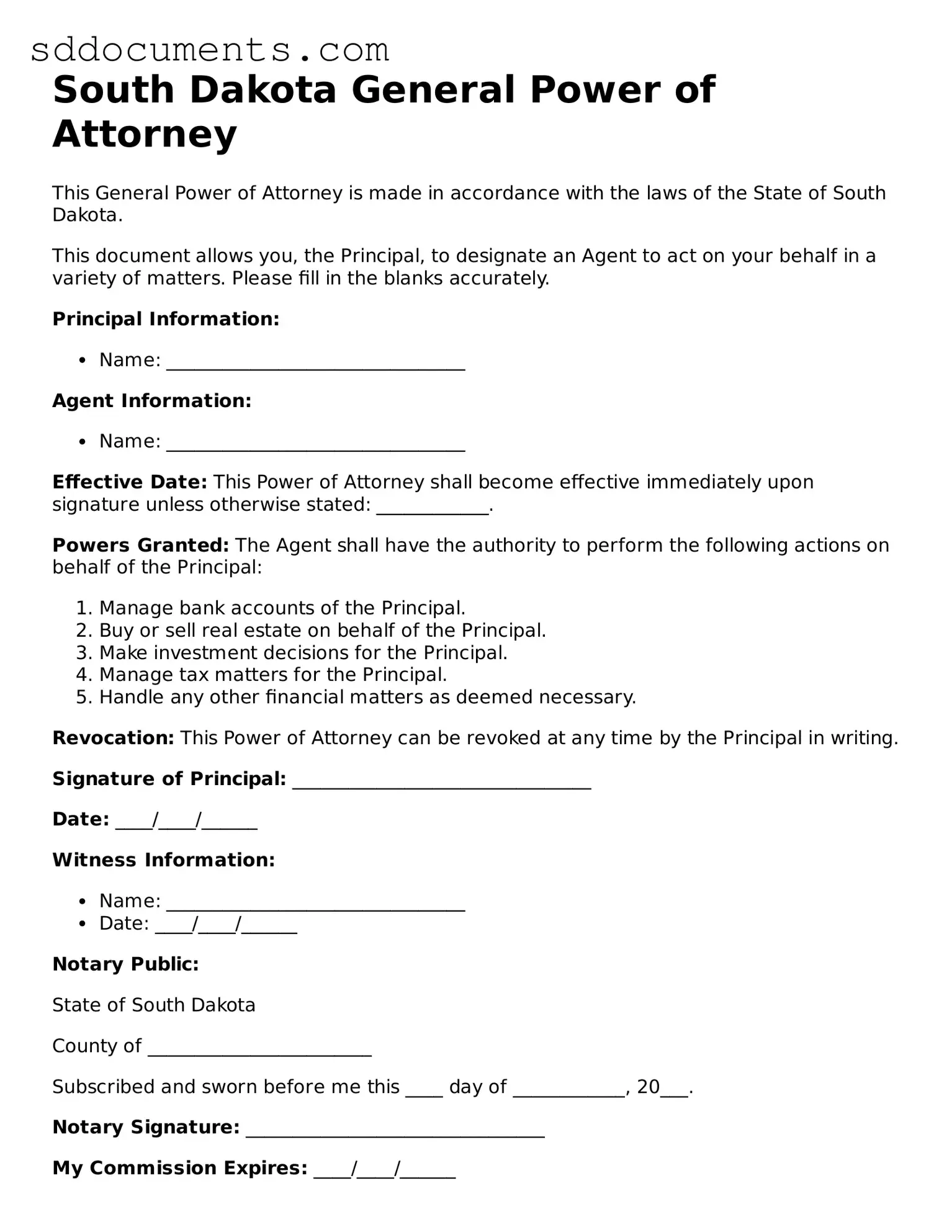Free General Power of Attorney Template for South Dakota
The South Dakota General Power of Attorney form is a legal document that grants one person the authority to act on behalf of another in various financial and legal matters. This form is essential for ensuring that your affairs are managed according to your wishes, especially in situations where you may be unable to make decisions for yourself. To get started on securing your rights and preferences, fill out the form by clicking the button below.
Customize Document Online
